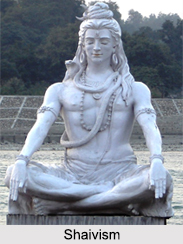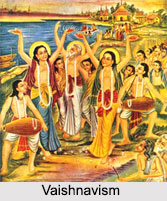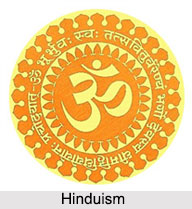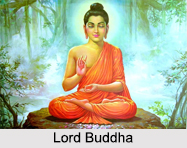Jainas had to fight their battle on two fronts since the days of Mahavira: against the followers of the Vedic Brahmanic religion and against Buddhists. They fought on the first front for their faith against the Vedic manifestation, its bloody sacrifices and its social order which assured precedence to the Brahmanas over all other sections of the society; and on the second, against the Buddhistic denial of the self and its doctrine of salvation which acknowledged asceticism only in a negligible measure and considered the saints other than the Tirthankaras as those who could guide one`s path to salvation. Buddhism had oppressed Jainism for some time quite strongly.
Kumarila, the restorer of the Vedic sacrificial service, and Sarikara, the pioneer of the illusionist doctrine of non-duality, also proceeded, with all the weapons of their spirit, against the Jaina-doctrine as a heterodoxy which was inimical to the Vedas. The constant progress of the movement coming from the orthodoxy against all heterodox trends increased the pressure, gradually but surely, and it weighed heavily upon the Jaina clan, and although this knew to ward-off the attacks, its position had become much weaker and it was shaken.
The consequence of the awakening of the Brahmanic religiosity was the revival of the Vaishnavite and Shaivite sects. Shaivism and Vaishnavism proved to be particularly dangerous opponents, and they did a severe damage to Jainism, particularly in the Deccan and the south.
The Shaivite sect of the Lingayats was another mighty enemy of Jainas. Lingayats proceeded against Jainas extremely fanatically, damaged their properties and life, destroyed their temples or appropriated them for their purpose. It is said that Saint Ekantada-Ramayya had particularly excelled in the propagation of the new doctrine.
It is seen from the inscription from the year 1368 that Jainas were oppressed later by the Sri Vaisnavas. Jainas then complained to King Bukkaraya-I of Vijayanagar against the persecutions to which they were subject on the side of the Vaishnavites. The king then ordered that the members of both the religions should enjoy the same cultural freedom in his land. Further he ordered that 20 guards be appointed near the Gommata-statue in Sravana Belgola to protect the shrine from denigration and saw to it that the destroyed temples were repaired.
The growing might of Hinduism was not revealed to Jainism in its losing the followers. It was also expressed in the increasing inclination of its follower`s towards Hinduistic views and customs. Thus more and more Hindu-deities were mentioned in the Jaina-literature from now on, although they have no place in the Jaina-system. They also used terms which reveal a strong Influence of the Vedanta; and in the following period, there was greater reconciliation even in the religious belief and social life.









